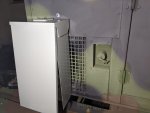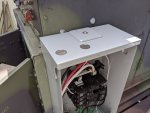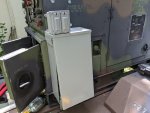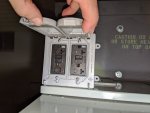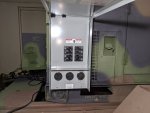First of all, just because it is off grid doesn't automatically mean that the codes don't apply or can just be ignored. It might be true in your area, but unless you've talked to an electrical inspector, the power company, or a professional electrician who knows the codes in your area don't make assumptions like that. It doesn't take much sometimes for a code inspector to write you up for all sorts of violations you never knew existed.
Might not apply to your situation, but still felt the need to throw that out anyway.
it's a 002, so you're only talking about 5-6kw of actual power output. 50 amps of 120V power or 25 amps of 240V power (maximum). Enough to run a couple tools at a time and the lights, but not going to be running multiple heavy pieces of equipment at the same time.
Best/safest, since you mentioned this is an off grid shop, is to wire the shop like you would a normal building, using a 50 or 100 amp panel or sub panel as your main breaker box. Where the main lugs are you wire it to the output of the generator. Use a power inlet box on the outside of the building and wire a 30 amp 240V power cable to the generator to plug into the building, thus making it a non-permanent power source (once again, codes in some places make a generator power source fall under a different code compliance category if it's hardwired)
Now, if we're just talking quick and dirty, buy a cable like this one, cut off the end, and wire it to your generator lugs.

you can either wire it one hot to each of the lugs for 120/240, or wire both hots to the 120V hot lug if you're going to leave the gen in 120V only output.
If the generator is a ways away from the shop (and for the sake of your hearing I hope it is) then wire in a 30 amp cable with an L14-30 plug on the end, then go to a splitter like this.
But seriously, it doesn't matter how many 120V outlets you have available, the generator is still going to only put out 5kw or so of power so even with all those outlets you're only going to be able to run a few things at a time.




